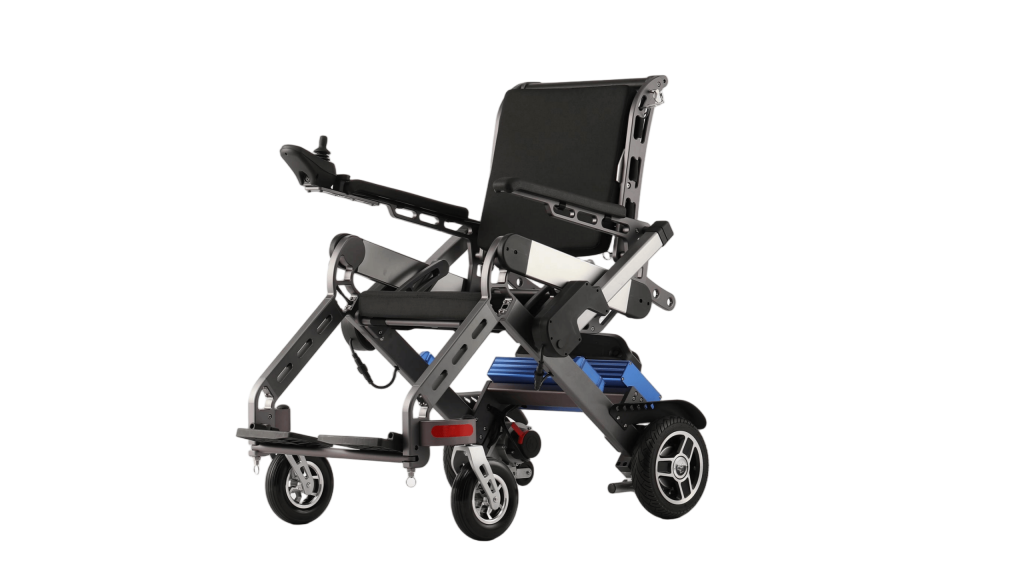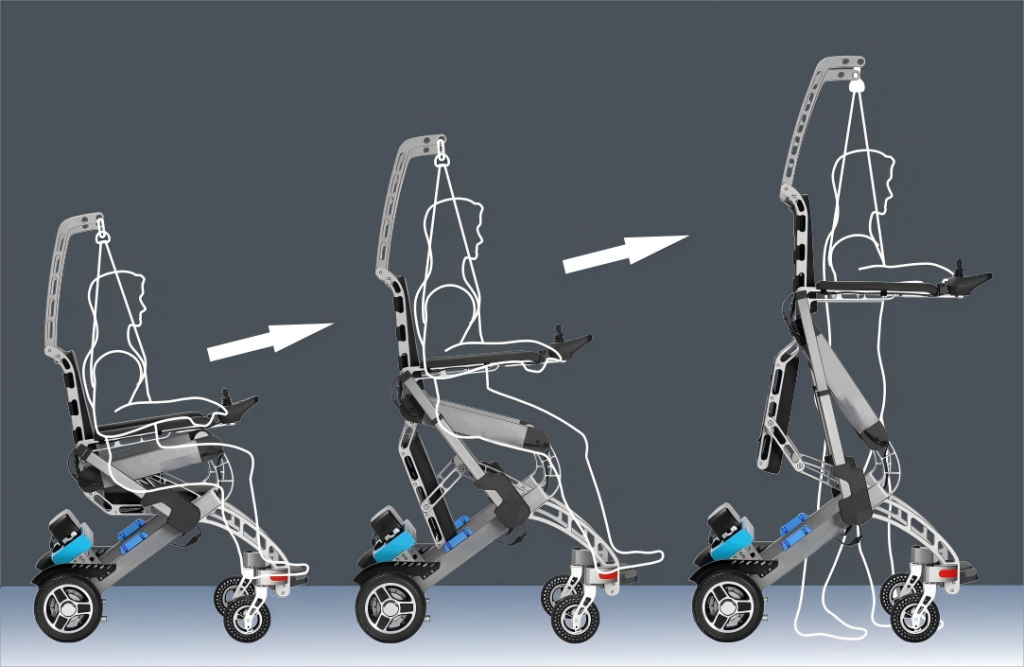Assistive Walking Robot

Brief
Our Assistive Walking Robot, as a Weight Reduction Walking Trainer, is primarily designed for individuals with lower limb functional impairments, such as those resulting from conditions like stroke, spinal cord injuries, trauma, Guillain-Barré syndrome, and others causing lower limb mobility issues. This product boasts innovative features including multifunctionality, ßexibility, practicality, and effectiveness. It enables autonomous training without being constrained by location or time, thus reducing the economic and manpower burden on households. This, in turn, enhances the quality of life for patients, fully showcasing the advantages and value of this product.
Innovative Design:
Integration of Standing Support, Weight Reduction, Walking, and Mobility!

Technical Parameters
| Item | Indicator |
|---|---|
| Product Name | Assistive Walking Robot |
| Model | QDL-202 |
| Motor | 24V 250W*2 |
| Battery | 24V 15.4Ah (Lithium Battery) |
| Endurance | ≥20km |
| Speed | ≤ 6km/h |
| Load Capacity | ≤250kg |
| Obstacle Crossing Height (seated position) | ≥40mm |
| Ditch Crossing Width (seated position) | ≤100mm |
| Level Braking | ≤1200mm |
| Turning Radius | ≤1000mm |
| Incline Capability (seated position) | 10° |
| Net Weight | 48kg |
| Applicable Height | Approximately 1500-1900mm |
Product Advantage
Compared with the traditional equipment, it needs a specific place, large volume, inflexible use, and needs the assistance of many people to use, resulting in large medical work and relatively large investment costs. Base on that attributes of the product, the product has the advantage of small volume and flexible use, and patients can independently carry out rehabilitation training in different scenes without the assistance of other, so that the space for hospital rehabilitation training can be saved, the boredom of patients to the monotonous environment can be improved, the workload of doctors and nurses can be greatly reduced, and both doctors and patients can benefit from the product. If the leasing business is carried out, It can also be rehabilitated at home. Through the remote gait analysis system, it can give immediate exercise rehabilitation prescription, which greatly expands the business scope of the rehabilitation department.
Clinical Main Uses
Movement Therapy
Movement therapy aims to improve and maintain the functionality of the musculoskeletal system, promote the formation and development of metabol ic functions, increase cardiorespiratory function, enhance the regulatory capacity of the nervous system, and boost the metabolic capabilities of the endocrine system. The focus is on training functions such as trunk and limb movement, sensation, and balance. Additionally, movement therapy contributes to improving and strengthening the respiratory-circulatory system, endocrine, and nervous system functions, especially by enhancing respiratory and circulatory system functions, leading to an increase in cardiac function index, an increase in lung capacity, and a reduction in the occurrence of cardiovascular complications.
Weight Reduction Support System Training
Weight reduction support system training, controlled by suspension straps, aims to reduce the patient’s weight as needed to ensure the safety of walking training. It is used for patients with lower limb weakness or spasms caused by musculoskeletal or neurological disorders, assisting them in early gait and balance function training.
Cerebral Palsy Limb Comprehensive Training
Comprehensive limb training for cerebral palsy involves therapeutic exercises to improve the limb function impairments in cerebral palsy patients, directing the development of limb functionality towards positive outcomes. Appropriate exercises promote the recovery of the body’s neurological functions and prevent muscle atrophy in the limbs. Systematic movement rehabilitation can reduce the disability rate of limb function and increase muscle strength in the body. It is recommended that cerebral palsy patients engage in regular exercises in daily life to enhance immunity and contribute to the improvement of their condition.
Hemiplegic Limb Comprehensive Training
Comprehensive training for hemiplegic limbs controls the muscle strength and movement of the lower limbs, promotes sensory nerve recovery, thereby facilitating functional recovery of the affected limbs, improving daily life capabilities, and enhancing overall quality of life.
Benefits
Medical Unit Benefits:
- The multifunctional application of the equipment with high frequency of use increases treatment options, simultaneously reducing the workload of healthcare personnel and lowering labor costs, thereby creating direct economic benefits for the medical unit.
- Changing the drawbacks of traditional equipment, such as large size, occupying significant space, high investment, and requiring substantial manpower (e.g., suspension-type, treadmill-based weight reduction gait training), expands societal impact and promotes the development of related key and specialized departments.
- Combining treatment and rehabilitation will help attract more patients seeking medical services.
Family and Individual Benefits:
- Patients can independently stand and engage in multifunctional training, such as weight reduction walking, reducing the burden on family caregivers.
- The product is not constrained by location or time, allowing patients to independently perform rehabilitation training at home, reducing the economic burden on the family, enhancing the patient’s confidence in recovery, and improving individual quality of life.
